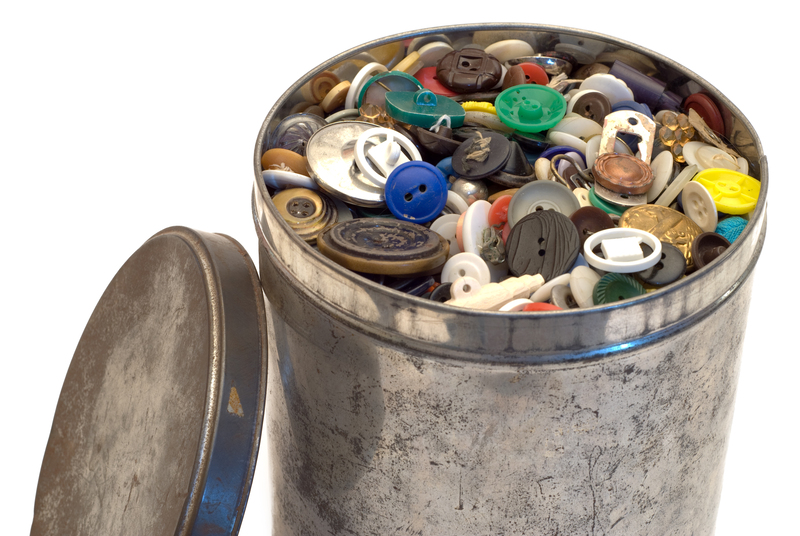Could We Put an End to Microplastic Pollution?
Microplastic pollution has become one of the most pressing environmental and public health challenges of the 21st century. Found in oceans, rivers, soil, and even the air we breathe, microplastics are everywhere--threatening wildlife, contaminating food chains, and sparking serious concerns for human health. As awareness grows, the urgent question arises: Could we put an end to microplastic pollution?
This comprehensive article explores the origins of microplastics, the breadth of their impact, the innovations and strategies being developed to combat them, and evaluates whether a world free of microplastic pollution is truly attainable.

What Are Microplastics?
Microplastics are tiny plastic particles typically smaller than 5 millimeters in diameter. They originate from the breakdown of larger plastic waste or are intentionally manufactured for products like facial scrubs, toothpaste, and industrial abrasives. Microplastics proliferate in ecosystems due to their small size, resistance to degradation, and widespread use of plastics globally.
- Primary microplastics: Directly manufactured small plastics (e.g., microbeads in cosmetics).
- Secondary microplastics: Fragments resulting from the degradation of larger plastic debris (e.g., bottles, bags).
The pervasiveness of microplastic pollution is evident--these particles have been found from the deepest ocean trenches to the heights of Mount Everest, in seafood, drinking water, and even human blood.
Main Sources of Microplastic Contamination
Understanding the sources of microplastic pollution is critical to addressing the issue. The leading sources include:
- Fragmentation of plastic packaging and bottles
- Textile fibers released during laundry
- Microbeads in personal care products
- Tire wear particles released onto roads
- Industrial processes and wastewater effluent
Controlling microplastic emission at the source is a crucial step toward reducing overall environmental contamination.
Impacts of Microplastic Pollution
Environmental Impacts
Microplastics cause severe damage to marine and terrestrial environments, affecting organisms at all levels of the food chain:
- Ingestion by microorganisms and marine animals, disrupting feeding and digestion processes
- Bioaccumulation in larger animals, including fish and mammals, leading to physical and chemical harms
- Damage to plant growth and soil microbes in agricultural environments
Human Health Risks
The presence of microplastics in food, air, and drinking water raises alarming public health concerns:
- Potential for toxic chemical leaching (such as BPA and phthalates)
- Unknown long-term effects from chronic exposure
- Possible links to digestive, immune, and reproductive issues
Microplastic contamination challenges our ability to maintain healthy ecosystems and protect human wellbeing.
Current Efforts to Combat Microplastic Pollution
Global Legislation & Bans
Governments worldwide are enacting microplastic reduction policies to tackle the issue at its source:
- Bans on microbeads in cosmetics and personal care products
- Restrictions on single-use plastics and packaging
- Improved regulations for industrial discharge and wastewater treatment
- International agreements such as the UN Plastics Treaty
Technological Innovations
- Advanced filtration systems in wastewater treatment plants to trap microplastic particles
- Development of biodegradable plastics and bioplastics as alternatives
- Innovative textile manufacturing to produce less-shedding clothing
- Specialized vacuuming robots and ocean cleanup devices
Corporate Responsibility and Industry Initiatives
- Brands transitioning to reusable and compostable packaging
- Clothing companies investing in low-shedding fabrics and filters
- Automotive industries researching eco-friendly tires
Public Awareness and Behavior Change
Growing consumer awareness is driving change on both individual and societal levels:
- Choosing products free of microbeads
- Opting for natural fabrics
- Supporting legislation to reduce plastic usage
- Taking part in local clean-up activities
Collective action is a fundamental component in the fight against microplastic contamination.
Can We Really End Microplastic Pollution?
Challenges to Eliminating Microplastics
While significant strides have been made, several challenges hinder the complete elimination of microplastic pollution:
- Sheer volume of existing plastics in the environment
- Lack of international coordination
- Inadequate waste management systems in many regions
- Limited public awareness in some communities
- Technological and financial barriers to advanced solutions
Unlike larger debris, microplastics are incredibly difficult to filter and remove from the environment due to their minute size, widespread distribution, and diverse sources.
Potential for Mitigation
While a future entirely without microplastic pollution may be difficult to achieve, significant progress can be made by:
- Substantially reducing new plastic input into the environment
- Fostering the adoption of sustainable materials and circular economy models
- Implementing stricter global regulations on plastic production and disposal
- Investing in novel cleanup technologies
- Enhancing environmental monitoring and data collection
Each measure helps to limit the accumulation and spread of microplastics, safeguarding both environmental and public health.
The Role of Innovation in Ending Microplastic Pollution
Cutting-Edge Cleanup Technologies
- Floating barriers and autonomous drones to collect plastics from waterways
- Magnetic separation techniques for urban water systems
- Biological solutions using micro-organisms to break down plastic polymers
- Nanotechnology-based water filtration systems
Innovative research is opening new horizons in microplastic removal and remediation. However, scalability and long-term impacts of such technologies must be continually assessed.
Sustainable Product Design
- Redesigning consumer goods to minimize plastic use and fiber shedding
- Introducing product certifications for microplastic-free items
- Integrating recycled and compostable materials in manufacturing
The transition towards ecologically responsible design is key to stemming ongoing microplastic emissions.
Incentivizing research and development in material science is vital for ensuring the next generation of products are both functional and sustainable.
What Can Individuals Do to Address Microplastic Pollution?
Although the issue can seem overwhelming, individual choices matter. Here's how everyone can contribute to reducing microplastic contamination:
- Opt for natural fibers (cotton, linen, wool) in clothing to reduce microfiber pollution
- Use microplastic filters in washing machines
- Limit single-use plastics and choose packages made from paper, glass, or compostable materials
- Avoid products with microbeads and read ingredient lists carefully
- Participate in local community cleanups and plastic recycling programs
- Support brands and policies committed to reducing microplastic emissions
Consumer awareness and responsible consumption are crucial elements of any robust anti-plastic pollution campaign.
Policy Solutions and International Cooperation
Comprehensive Plastic Management
- Implementing container deposit schemes to boost recycling rates
- Mandating extended producer responsibility for plastic products
- Incentivizing development and use of alternative materials
- Harmonizing product labeling for recyclability and biodegradability
Global Collaboration
- International treaties to regulate plastic production, trade, and waste
- Sharing best practices and technological advances
- Joint funding for research, monitoring, and cleanup operations
Unified global action is necessary to address the transboundary nature of microplastic pollution and ensure all nations work toward common environmental standards and safeguards.

The Future of Microplastic Pollution Control
Could we put an end to microplastic pollution? The answer depends on sustained and coordinated efforts across society, industry, and government. While wiping out all existing microplastics is unlikely in the short term, a combination of regulatory action, technological innovation, and societal change can drastically reduce future emissions and ultimately lead toward a cleaner, healthier planet.
Key Takeaways
- Microplastic pollution is a pervasive problem threatening ecosystems and public health
- Strategic interventions can stem additional contamination and gradually reduce environmental loads
- Investment in innovation, global policy, and public education is vital for success
- Every individual and organization has a role to play in moving toward a microplastic-free future
Tackling microplastic pollution requires a holistic and persistent approach, but with the right measures, a significant and lasting reduction is possible.
Conclusion
Ending microplastic pollution may seem like a distant goal, but every action counts. From reducing plastic use and supporting circular economies to demanding tougher regulations and investing in transformative technologies, the path to a microplastic-free planet is built on collective effort and innovation.
As global citizens, we must recognize our shared responsibility in stewarding the environment and safeguarding future generations from the harmful impacts of plastic pollution. The time to act is now--so that one day, the story of microplastic pollution can be one of true prevention and recovery.